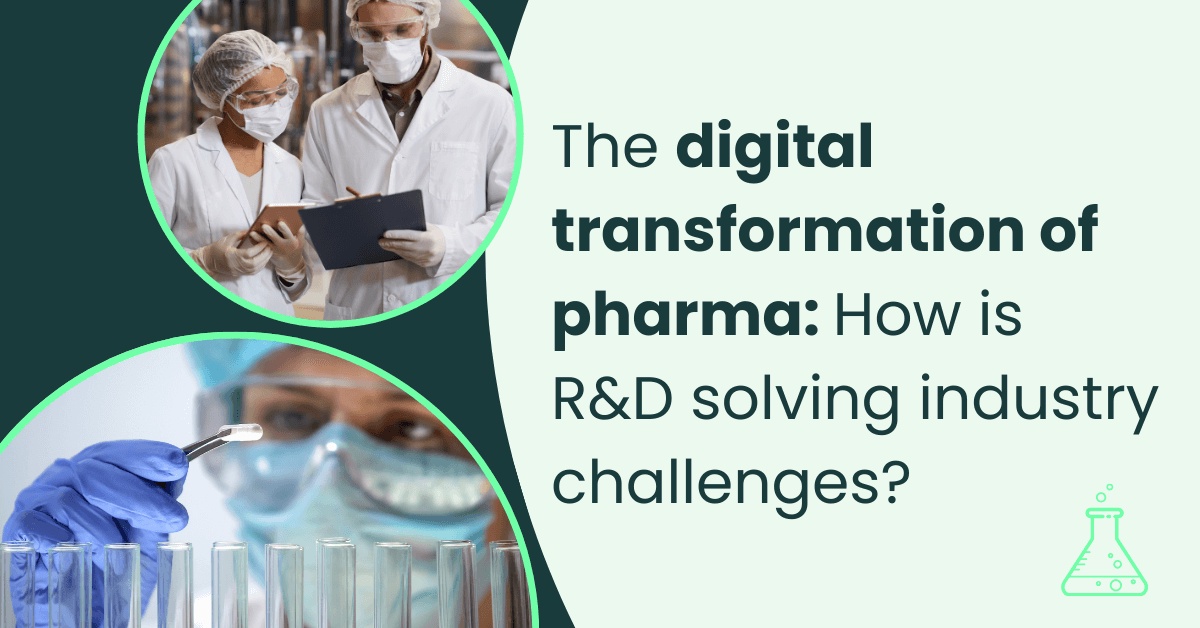The pharmaceutical industry relies on innovation to address evolving health challenges, discover novel treatments, and improve patient outcomes. That’s why R&D plays a crucial role in finding new or improved ways to optimise therapeutic approaches to enhance overall public health and stay ahead of the disease. However, R&D in the pharmaceutical industry doesn’t come cheap with the cost of volunteers and materials which is why R&D tax credits are essential for the industry to stay ahead.
Essentially, the government highly regards companies who embark on making advancements in their industry by attempting to overcome scientific or technical uncertainty and providing them with a financial boost by reducing their tax liabilities. In fact, lots of pharmaceutical companies involve themselves with R&D every year, and they often don’t realise they are eligible for the scheme. Let’s pinpoint what counts as R&D to help you determine if you have an R&D claim ready to be completed.
What pharmaceutical industry challenges are being solved by R&D activities?
Opportunities for R&D projects lie in industries that have room for improvement. R&D activity looks at how to create improved efficiency, productivity, and support for people, the planet, and communities. Here are some challenges that are faced in pharma that an R&D project may look at tackling:
Unmet medical needs
The continual discovery of new diseases and the evolving nature of existing ones create gaps in available treatments, necessitating ongoing research to meet emerging healthcare demands. People are waiting long periods of time without treatments.
Keeping up with the digital transformation of pharma
There is growing pressure for pharmaceutical companies to keep up with the fast rate of digital transformation in pharma. This poses both an opportunity and a commercial challenge; failure to acknowledge innovative medical technological solutions and incorporate them could set businesses behind their technology-embracing competitors. When implementing more digital processes and tools, data security needs to be addressed as well as bespoke implementation so all the digital solutions work seamlessly together.
Regulatory hurdles
Stringent regulatory processes are in place to ensure the safety and efficacy of pharmaceuticals, but these can be time-consuming and complex, requiring significant investment and adherence to rigorous standards. These compliance standards are time-consuming to achieve, meaning pharmaceutical companies are slowed down.
Drug resistance
Over time, pathogens and diseases can develop resistance to existing drugs, leading to the need for ongoing research to develop new and more effective treatments. There is pressure to find a solution to drug resistance soon to ensure patients aren’t without treatment.
Manufacturing optimisation
The pharmaceutical manufacturing process is intricate and costly; ongoing research aims to streamline operations, improve efficiency, and reduce costs while maintaining quality.
Accessibility and affordability
Balancing the need for innovation with the goal of making drugs accessible and affordable is a challenge, as breakthrough treatments may initially come with high costs.
Personalised medicine
The growing understanding of individual genetic variations requires tailored treatments, leading to the development of personalised medicine approaches that account for patient-specific factors.
Technological advancements
Rapid advancements in technology, such as AI and big data, offer new possibilities for drug discovery and development, but integrating these technologies requires ongoing research and adaptation.
Global health threats
Emerging diseases and global health threats necessitate constant research to understand and combat new pathogens, ensuring a rapid and effective response to potential pandemics.
Data security and privacy
The increasing reliance on digital health data raises concerns about the security and privacy of patient information, requiring ongoing research to develop robust systems and protocols.
Sustainability
As environmental concerns grow, the pharmaceutical industry seeks sustainable practices, such as green chemistry and reduced waste, through ongoing research to minimise its ecological footprint.
Market competition
Evolving healthcare needs and market dynamics necessitate continuous research to stay ahead of the competition, fostering innovation to meet changing demands and preferences.
What does R&D look like in the pharmaceutical industry?
R&D can take place at any part of the drug development process, whether that’s during the trialling phase or during the preclinical development.
To retrieve R&D tax credits in the pharmaceutical industry, you need to have spent some money in the UK on your project. This could be for the R&D costs of staff, software, subcontractors, clinical trials, materials and consumables, and cloud computing. Here are some examples of what R&D claims for pharma could look like to help you gauge what counts and what doesn’t:
Development of new pharmaceuticals
- Investigating novel compounds with potential therapeutic effects on specific diseases.
- Conducting pre-clinical studies to assess the safety and efficacy of new drug candidates.
- Designing and optimising formulations for improved drug delivery and bioavailability.
- Exploring alternative dosage forms, such as sustained-release formulations, to enhance patient compliance.
Innovating biopharmaceuticals
- Researching and developing monoclonal antibodies for targeted therapies.
- Creating recombinant proteins for therapeutic applications, such as in treating genetic disorders.
- Optimising bioproduction processes for large-scale manufacturing of biologics.
- Exploring gene therapies to address underlying genetic causes of diseases.
Manufacturing advanced medical devices
- Designing and prototyping innovative drug delivery devices for improved patient convenience.
- Developing diagnostic devices for early disease detection and monitoring.
- Designing implantable medical devices, such as prosthetics or drug-eluting stents.
- Integrating digital health technologies into medical devices for real-time monitoring and data collection.
Drug repurposing
- Investigating existing drugs for new therapeutic indications, leveraging their known safety profiles.
- Exploring combinations of drugs to enhance efficacy or address multi-faceted aspects of diseases.
Vaccines
- Researching and developing new vaccines for infectious diseases.
- Improving vaccine formulations for increased efficacy and longer-lasting immunity.
Drug delivery systems
- Developing nanotechnology-based drug delivery systems for targeted and controlled release.
- Designing inhalable drug formulations for respiratory conditions.
Rare diseases
- Conducting research on orphan drugs for rare diseases with limited treatment options.
- Collaborating with patient advocacy groups to advance research on rare disease therapies.
Digital health and health tech
- Developing mobile applications for patient monitoring and adherence.
- Integrating wearable devices into clinical trials for real-time data collection.
Artificial Intelligence (AI) and data analytics
- Applying machine learning algorithms for drug discovery and prediction of clinical trial outcomes.
- Utilising data analytics to optimise R&D processes and identify trends in large datasets.
How do R&D tax credits benefit the pharmaceutical industry?
R&D tax credits are vital for pharmaceutical companies as they incentivise research and development (R&D) efforts, fostering innovation in the development of new drugs and medical treatments. If a business wants to take a risk, the R&D tax relief is there to help them. These credits help alleviate the high costs associated with drug discovery, encouraging companies to invest in cutting-edge technologies and explore novel therapeutic avenues. Ultimately, the impact of tax incentives on a pharmaceutical business is two-fold: they not only support the financial health of the company but also contribute to the overall advancement of medical science, leading to improved healthcare outcomes for society.
Final thoughts
In conclusion, the pharmaceutical industry relies on robust research and development (R&D) to tackle challenges ranging from unmet medical needs to digital transformation. The quest for solutions to drug resistance, regulatory hurdles, and manufacturing optimization underscores the industry's commitment to innovation. R&D tax credits play a pivotal role, in alleviating financial burdens and encouraging investment in cutting-edge technologies. These credits not only support the financial health of pharmaceutical businesses but also drive industry-wide advancements, contributing to improved global healthcare outcomes.
How to receive R&D tax credits for the pharmaceutical industry?
In recent years, HMRC have increased their efforts to penalise abuse of the R&D tax relief meaning there could be costly consequences from unintentional mistakes. To maximise the success of your R&D claim, it’s best to partner with an R&D tax credit specialist with an outstanding track record with HMRC. Our team at Alexander Clifford understands what’s needed for a strong claim for pharma. We’d love to hear from you about your R&D activities and be the ones to advocate your efforts. Book a free consultation with us and we’ll line up a conversation with you to determine if your project falls within the parameters of HMRC's standards to reward R&D tax credits.


No comments yet